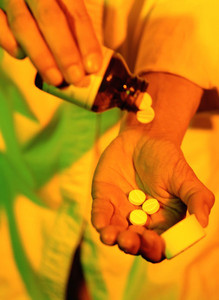In the US, the outstanding issue surrounding the biosimilars debate remains the exclusivity period before competitors can come on the US market – and the US is no closer to a resolution following the 10 June 2009 report by the Federal Trade Commission (FTC), Emerging Health Care Issues: Follow-on Biologic Drug Competition.
BIO: Patent gap for biologicals ignored by Federal Trade Commission report
Home/Policies & Legislation
|
Posted 31/08/2009
 0
Post your comment
0
Post your comment
In a first reaction Mr Jeff Joseph of the US innovator Biotechnology Industry Organization (BIO) stated that “upon first glance, it appears that the summary conclusions in the report are based upon fundamentally flawed or highly selective assumptions, an exceedingly narrow policy perspective, and a lack of true understanding of the necessary conditions to drive future biomedical breakthroughs. The report appears to minimise greatly the impact on innovation that would occur under a new paradigm in which biosimilar competitors would be able to take a free ride off the massive R&D investment made by the initial innovators.”
He argued that two thirds of the future clinical pipeline for patients resides in small biotech companies – companies without profits, companies heavily reliant on private investment to fuel R&D, companies that are particularly susceptible to negative changes in investment incentives.
Mr Joseph said, “Biotechnology medicines extend and improve the quality of life – and provide renewed hope – for patients suffering from debilitating and life-threatening diseases for which there currently are no or inadequate therapies such as cancer, HIV/AIDS, Parkinson’s, multiple sclerosis, diabetes and a host of rare diseases. Biotechnology also creates high-wage, high-value jobs and has a high multiplier effect: the 1.3 million Americans employed in the biosciences in 2006 (the latest year for which data is currently available), helped to create an additional 6.2 million jobs, for business services, contractors and other vendors. An unbalanced pathway to biosimilars jeopardises the ability of biotechnology to continue US leadership in innovation, provide hope for patients and help drive economic growth.”
Furthermore, he noted that while the FTC does not have policymaking authority in this area, the Congress does. “We urge the Congress to take a more balanced approach to biosimilars policy. We continue to support a regulatory pathway for biosimilars that safely increases access to the breakthrough therapies and cures for the patients of today while preserving the incentives necessary to address the unmet medical needs of the patients of tomorrow.”
BIO has also provided an in-depth rebuttal to the FTC’s report, which came out against an exclusivity period for biologicals. BIO argues that the commission has not paid attention to the fact that there still exists substantial questions about the effectiveness of innovator patent protection for biological products, including ‘gaps’ in protection created by regulatory standards.
The FTC report concluded that the 12–14 years of data exclusivity sought by brand biologicals makers and some key lawmakers in biosimilars legislation is too long; BIO members claim that, to be assured of recouping their investment, any statutory formula that allows for biosimilars should at least guarantee the same degree of effective market protection that Congress has found necessary to maintain incentives for innovation in small-molecule drugs. The report argued that, with few exceptions, biotech products do not need additional exclusivity. The FTC claims that nothing about the introduction of biosimilar drug products will alter the fact that patents protect pioneer biological drug products, even after enactment of an approval process for biosimilar drugs.
But this argument ignores the realities of the difference between small molecules, in the generic drug context, and biotech products, BIO claims.
“In the small molecule, generic drug context, patents do provide the incentives for continued innovation and the period of data exclusivity is less important, because the regulatory standard for generics ‘sameness’ and the patent system (with appropriate term extensions permitted under Hatch-Waxman) work in concert to provide protection against premature generic competition – on average for 12–14 years, as the FTC notes,” BIO stated.
But the regulatory approval standard for biosimilars creates what BIO terms a ‘patent protection gap’ that may allow for abbreviated regulatory approval of a biosimilar which does not infringe an innovator's patents.
According to BIO, these approvals are likely because of the confluence of two critical factors not present in the Hatch-Waxman construct.
The first is the fact that, unlike a generic drug which must be the same as an innovator product, a biosimilar will need only be ‘similar’ to the corresponding innovator product. BIO claims that, indeed, a bill introduced by US Representative Henry Waxman, HR 1427, “would permit the approval of products that are not very similar to the innovator biologic at all,” since it allegedly has a broad and undefined view of similarity. “While the Waxman bill provides for approval of a biosimilar that is highly similar structurally and has the same mechanism of action, dosage form, and strength, it also expressly allows for any and all of these requirements to be waived,” BIO asserts.
Accordingly, the biosimilar product could be quite dissimilar from the innovator's product in structure, in route of administration, mechanism of action, dosage form or strength – and yet still theoretically gain abbreviated approval. It is this uncertainty that will raise substantial questions about the effectiveness of innovator patent protection, but is completely ignored by the FTC report, BIO states.
BIO further notes that, due to the nature of biological products – large molecules produced by living cells and organisms through highly specific processes – patent protection is often narrower and easier to ‘design around’ than that of small molecule drugs, and the trend is toward increasingly narrow biotech patents.
BIO has a reply to the FTC's contention that, to date, there is little evidence that patent ‘design arounds’ have occurred in biologicals to any greater degree than with respect to small molecule drugs. BIO's argument is that FTC cannot make assumptions based on what has happened to date, versus what could happen once a biosimilar pathway is created.
Without an abbreviated biologicals pathway, there is much less financial motivation to develop competing ‘me-too’ products specifically designed to exploit gaps in the innovator's patent protection, BIO wrote. “The cost and risk of such an approach in today's market is high, and thus it is unsurprising that there are not many existing cases of biotech patent ‘work-arounds’,” it stated. With new incentives in place vis-à-vis a clear pathway to approval, the whole landscape on ‘design-arounds’ could change.
BIO sees a danger in the fact that the FTC focused its report solely on the competitive aspect of a pathway for the approval of biosimilars. It said that the FTC report never addresses the fundamental questions raised about the impact of premature biosimilar entry on venture capital investment in biotech.
BIO takes the position that investors need assurances due to unpredictable patents, and thus a period of 12–14 years of data exclusivity.
At one point, the FTC in its report stated that the market dynamics of biosimilars would be more akin to brand-to-brand competition than the dynamics of brand-generic competition under Hatch-Waxman, i.e. in terms of likely number of entrants, price competition, and market share erosion. BIO said it agrees with the FTC's view, but only up to a point.
BIO argues that that any biosimilar competitor would not resemble brand-to-brand comparison due to the following: the biosimilar manufacturers would be allowed to essentially ‘free ride’ off the work of the innovator. BIO asserts, “There is a huge difference between the US$1.2 billion (Euros 861 million) that is invested on average to produce true innovation, versus the US$100-200 million (Euros 71-143 million) (or less over time) that the FTC suggests a biosimilar manufacturer would have to invest. In no other industry outside of pharmaceuticals do we affirmatively permit (let alone encourage) such 'free riding' and to suggest – as the FTC does – that this fact is essentially meaningless in terms of economic incentives for future innovation is baffling.”
Early Patent Resolution Sparks Debate
In its report, the FTC also concluded that special procedures for an early start to resolve patent issues between pioneer and follow-on biologic manufacturers prior to FDA approval are unnecessary and could undermine patent incentives and harm consumers.
“Again, the opposite is true,” BIO claimed in its rebuttal. BIO argues that, without a mechanism to resolve patent disputes early – before FDA approval – follow-on products will systematically have to enter the market under a cloud of patent uncertainty. “Once on the market, patent disputes over such products would have to play out in high-stakes litigation, causing confusion for patients, physicians, and insurers about the long-term availability of certain products,” BIO wrote. “Congress has recognised that patent disputes over medicines must be resolved as early as possible, and in 1984 created a specific mechanism to litigate patents before generic small molecule drugs are released to the public. The same should be true for biosimilars, so that patients can have the assurance that such products, once released, are there to stay.”
The FTC, in its report, elaborated on its reasoning for opposing the creation of a special patent resolution process prior to launch of biosimilars. It alleges that the procedures put in place for generics in 1984 were a special circumstance, i.e. there were concerns in the 1980s that generic entrants in small-molecule drug markets might be unable to satisfy a potential treble damage award for infringing the branded manufacturer's patents; and that the patent resolution process creates opportunities for anticompetitive practices, such as ‘pay-for-delay’ settlements that delay entry, not encourage it. “It is likely that a pre-approval patent resolution process in the follow-on biologic context could facilitate collusive agreements and/or provide the pioneer biological drug manufacturer with competitively sensitive information about a significant potential competitor to which it otherwise would not have access,” the FTC's report states.
At a 11 June 2009 hearing by the House energy and commerce health subcommittee, US Representative Ms Anna Eshoo also called the FTC report ‘flawed’ and pointed out that adoption of the report's recommendations could lead to firms ‘designing around’ patents protecting biologicals in ways not contemplated in the report. The industry-friendly Ms Eshoo bill would give brand drug makers up to 14 years without generic or biosimilar competition. That bill is backed by many of the subcommittee's Democrats.
For that reason, Chair Henry Waxman continues to try to garner support for his bill offering five years of exclusivity.
Other legislators who support BIO's views warned at the hearing that if the FTC is wrong in its assumptions, it could jeopardise R&D efforts for biotech drugs.
Source: BIO, Scrip
Guidelines
New guidance for biologicals in Pakistan and Hong Kong’s independent drug regulatory authority
Canada poised to remove requirement for Phase III trials for biosimilars
Most viewed articles
The best selling biotechnology drugs of 2008: the next biosimilars targets
Global biosimilars guideline development – EGA’s perspective
Related content
ANVISA tackles 24-month backlog in biologicals post-registration petitions
US EO: delivering Most-Favored-Nation Prescription Drug Pricing to American patients
Uruguay to establish independent AUVISA drug agency for healthcare reform
Malaysia announces Screening Package for new drugs and biologicals
ANVISA tackles 24-month backlog in biologicals post-registration petitions

Home/Policies & Legislation Posted 10/10/2025
US EO: delivering Most-Favored-Nation Prescription Drug Pricing to American patients

Home/Policies & Legislation Posted 03/10/2025
Uruguay to establish independent AUVISA drug agency for healthcare reform

Home/Policies & Legislation Posted 17/09/2025
Malaysia announces Screening Package for new drugs and biologicals

Home/Policies & Legislation Posted 25/08/2025
The best selling biotechnology drugs of 2008: the next biosimilars targets






Post your comment